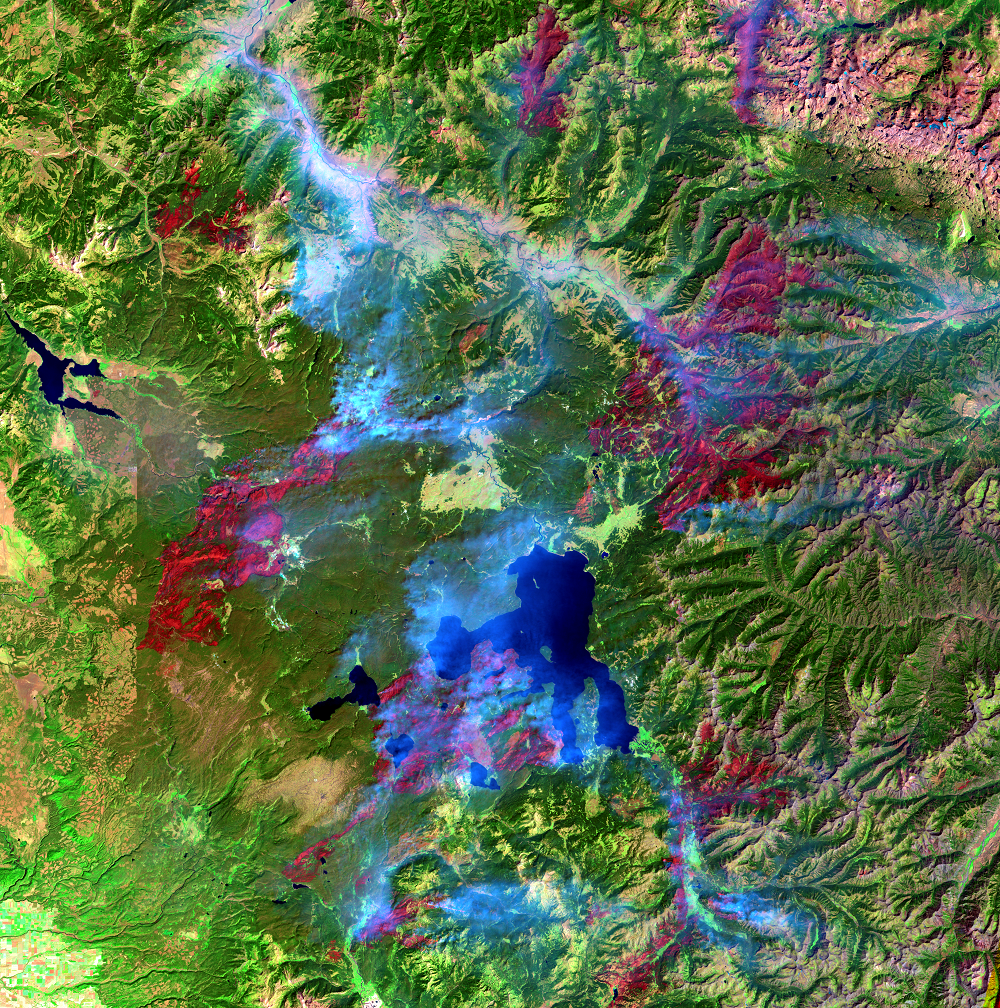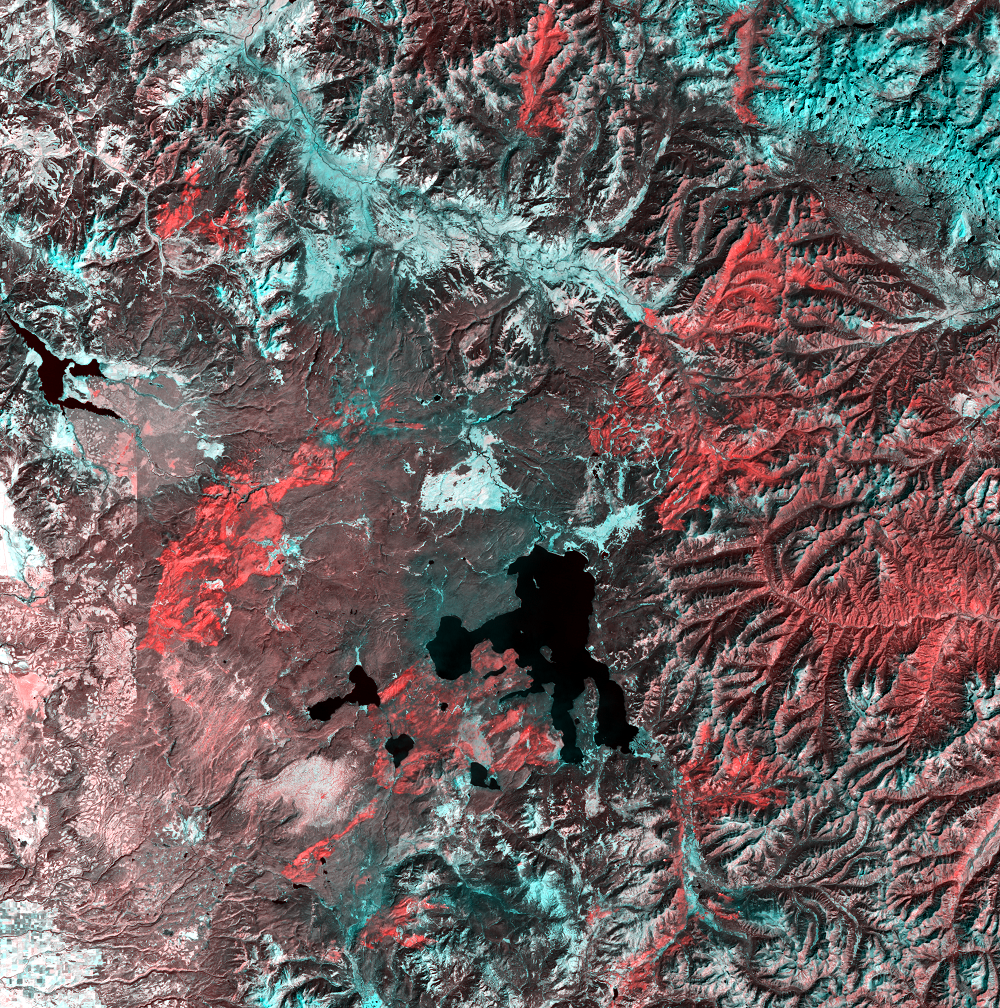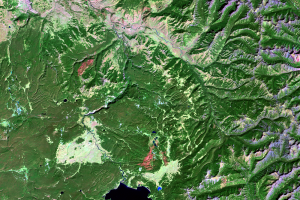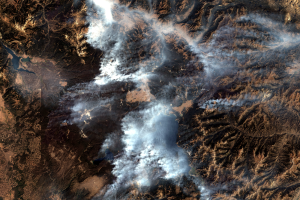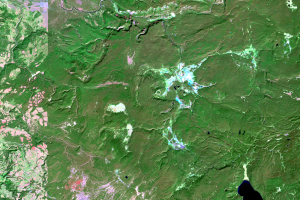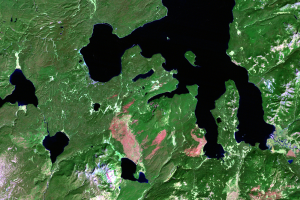In natural color satellite images of wildfires, smoke often obscures the view of the ground. Landsat uses several infrared wavelengths, or bands, of light. If some of those infrared wavelengths are used, then different details about the location of burned areas emerge.
The combination of bands we have been looking at use two infrared wavelengths along with one visible band (green). This combination shows freshly burned areas as deep red and vegetation as green. Smoke from fire appears blue. The infrared bands help us see the burned areas clearly, but the smoke can still get in the way.
The third image at the left uses Landsat’s thermal infrared band and a shortwave infrared band to cut through the smoke to see ground conditions. In this false color image, burned areas are red-orange. This view can help people see where fire might be approaching populated areas.



